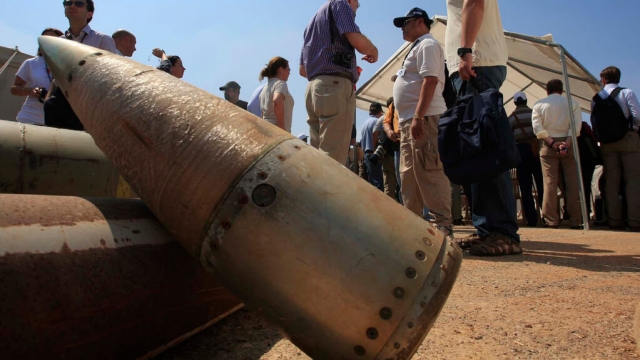Cluster ammunitions are controversial, and the decision by the White House to send them to Ukraine is turning heads.
That’s because they’re banned in more than 100 countries. The Pentagon made the announcement official on Friday, with the president explaining the reason.
"The main thing is they either have the weapons to stop the Russians now—keep them from stopping the Ukrainian offensive through these areas—or they don’t. And I think they needed them," said President Joe Biden.
Cluster munitions, also known as cluster bombs, are lethal weapons that simultaneously take out tanks, artillery positions, and even troops.
Here's how they work: When dropped from above, the cluster bomb opens midair and releases hundreds of smaller bomblets across the battle space.
They can be dropped from an aircraft, launched from missiles, or fired from cannons that Ukraine already has in its possession. The munitions break open at a predetermined height, depending on the size of the intended target, then the bomblets spread over that area and explode close to or on the ground.
Cluster munitions have a notoriously high dud rate, meaning thousands of those smaller bomblets land on the ground without exploding, posing a danger to civilians who come across them years later, accidentally setting them off.
That's why more than 120 nations have signed on to a treaty—enacted in 2008—banning the manufacture, stockpiling, or transfer of cluster munitions. Human rights advocates have widely condemned these weapons and alerted the world to Russia's use of them in Ukraine.
SEE MORE: 100 nations have banned cluster bombs. So why won't the US?
"But there is also a massive risk of civilian harm if Russian troops and tanks roll over Ukrainian positions and take more Ukrainian territory, and subjugate more Ukrainian civilians because Ukraine does not have enough artillery. That is intolerable to us," said U.S. National Security Advisor Jake Sullivan.
One high-ranking official from the Defense Department told reporters Friday that the U.S. is sending its most modern, dual-purpose munitions, which have a dud rate of under 2.35% compared to the alarming 30–40% rate seen in Russian ordnance.
"It's been hard sledding because the Russians had six months to dig in. And so those defensive belts that the Russians have put in place in the east and the south are hard; they'd be hard for any military to punch through," said Dr. Colin Kahl, the Under Secretary of Defense for Policy.
Experts say their use could enhance the Ukrainian army's capabilities to quickly take back territory that the Russian army has filled with mines. There’s also concern that Ukrainian forces are not taking advantage of the good weather and the chaos caused when Russian mercenaries briefly rebelled against the Kremlin.
"The fact of the matter is we have held on to them for a very specific need in a very specific part of the world for a very specific war plan. We would not be holding on to them if we didn't see a very important requirement now on this battlefield, as was explained. Russia is using a very different type," said Gen. Philip Breedlove, retired General of the U.S. Air Force and former NATO Supreme Allied Commander for Europe.
Because Ukrainian troops are burning through conventional artillery stockpiles, the worry is that they’ll run out of their weapon of choice against Russian forces. So, because the U.S. needs to safeguard its own munitions supply, sending cluster bombs may be a better (if controversial) choice because of their power and the fact that the U.S. hasn’t touched its supplies since the war in Iraq.
Trending stories at Scrippsnews.com




